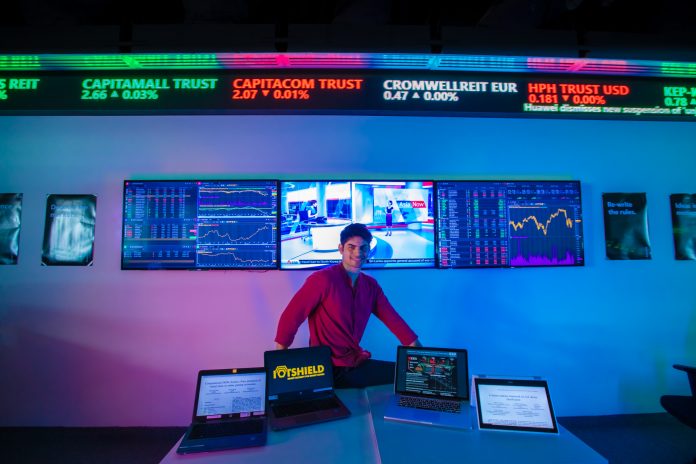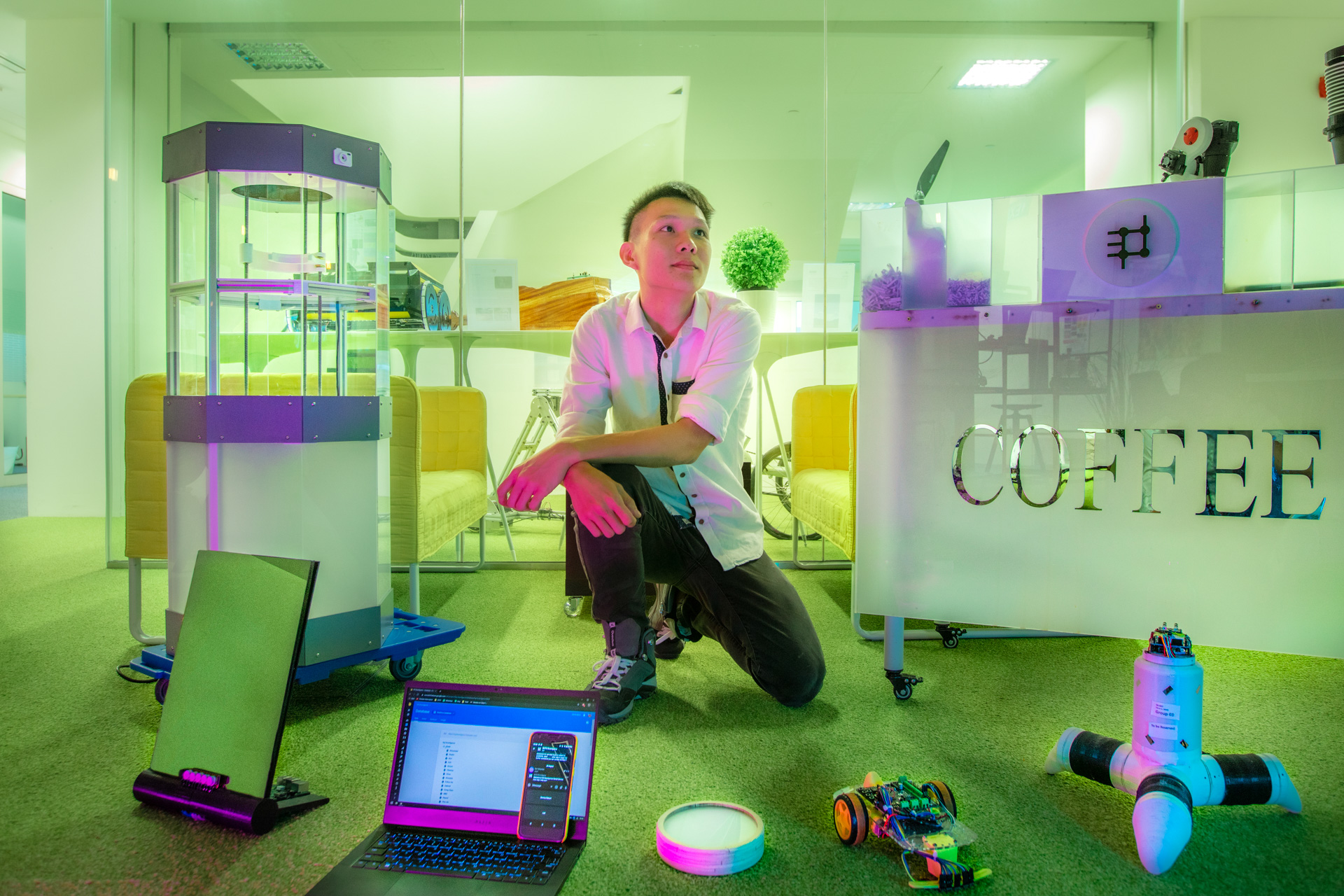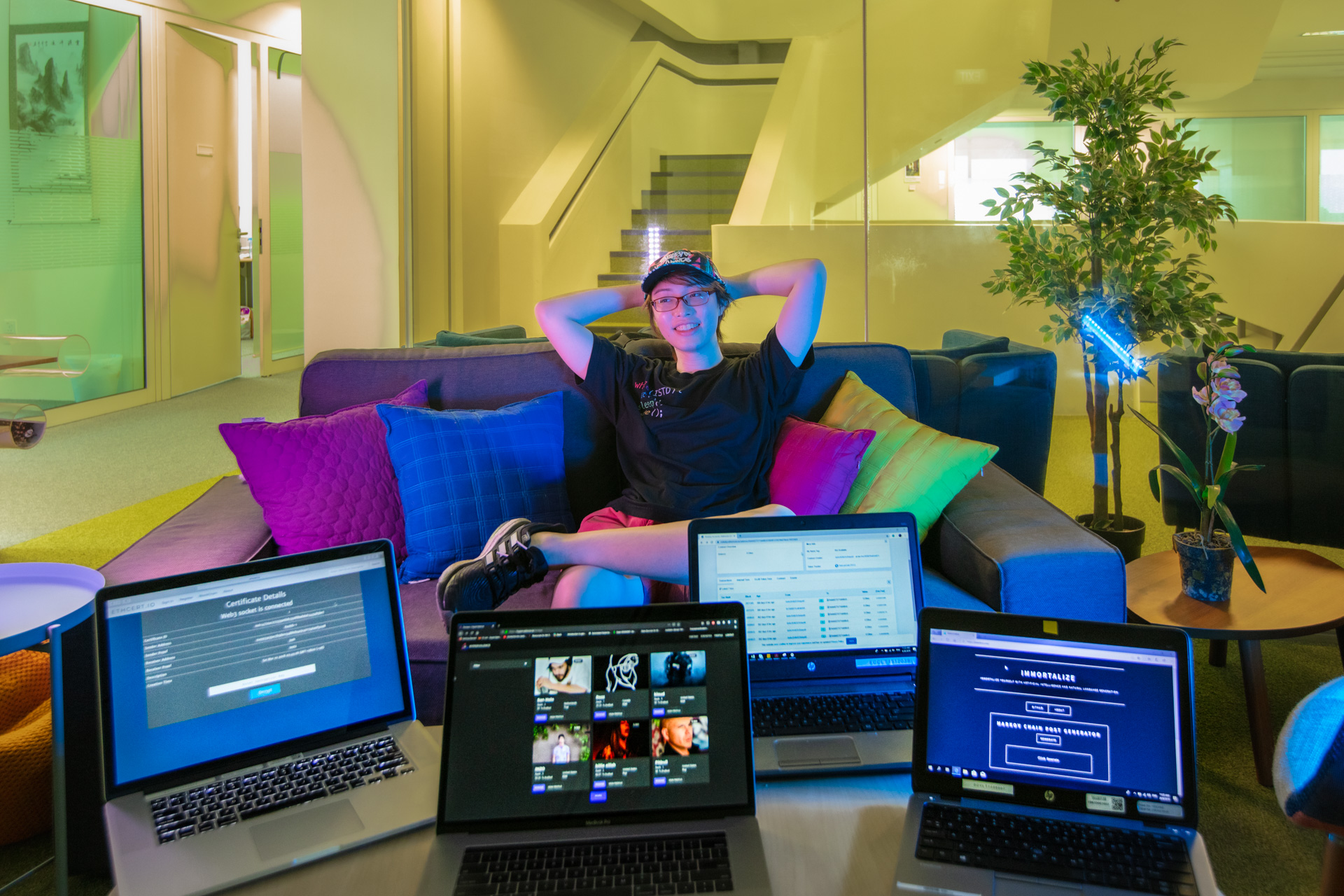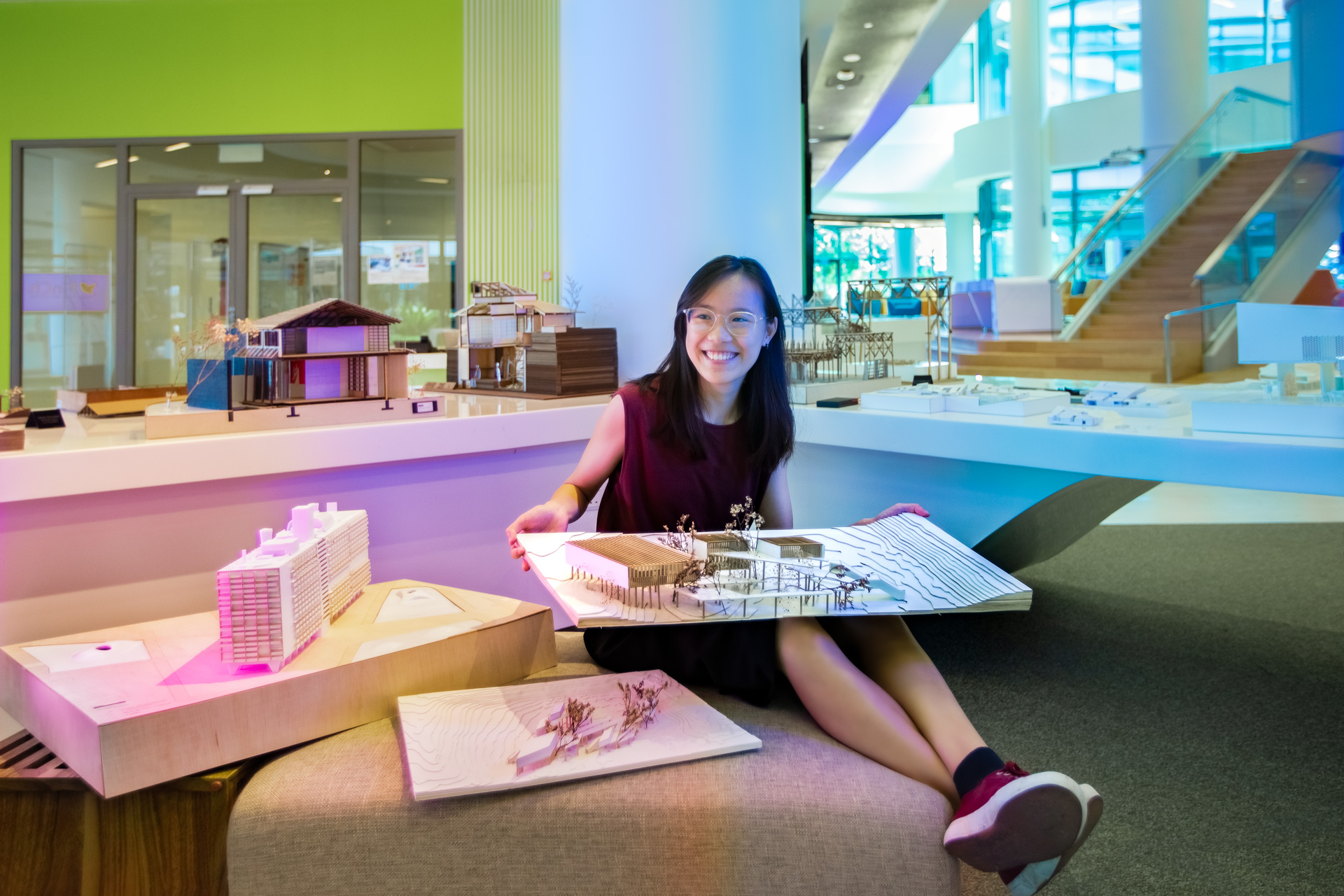We asked one student from each Pillar to tell us about the projects that defined their SUTD education.
Bharat (ESD)
ESD is essentially about building systems that use data to solve problems. No matter which industry you are in — it could be finance, supply chain management, or energy systems — it teaches you to use mathematics and statistics to solve problems in a systematic manner and generate insights for customers and clients.
One of the most interesting projects I’ve done is a consulting project with DBS for my Statistics and Manufacturing service operations course. We worked with their chief analytics officer to build a model to predict when and how many customers would visit their branches, so that DBS can allocate their manpower accordingly. In order to build this model, we had to study 4 years’ worth of data on customer arrival times, weather, and traffic conditions.
As part of an internship at Singtel, I wrote and published a paper on cybersecurity. I had no prior research or cybersecurity experience before the internship, so I turned to the knowledge I gained from SUTD’s courses on statistics, probability, optimisation, and machine learning to generate a novel machine learning framework to solve a particular cybersecurity problem. I was subsequently sponsored by ESD to present the paper at COMSNETS 2019, an international conference on networking and communication technology.
For my Capstone, my friends and I worked on an entrepreneurship project. We built an edge computing intrusion detection device designed for home use. Edge computing is a state-of-the-art technology currently used in enterprise solutions. I believe this is where the future of data analytics and computing is headed in the next 10 years, with the Internet of Things becoming a part of everyday life. We’re moving away from cloud-based to edge-based solutions. Our team is going to continue working on this project on the side. We already have a proof of concept and we are ready to pitch it to investors.
Yos Yohannes (EPD)
EPD has a very diverse mix of students. We have those who are really good at coding (software), and those who are good with computer engineering and mechanical engineering (hardware). I had the opportunity to explore both the hardware and software aspects of product development, which came very easily to me. Our professors are really good at teaching, and they will take time to answer your questions and help you even at odd hours. I like the pace of learning here.
I have done quite a number of projects, ranging from a simple line tracking race car to a completely new modular soft robotics kit. I even collaborated with the EPD staff and students from the SUTD Organisation of Autonomous Robotics (SOAR) to create a mobile coffee booth that serves coffee with its robotic arm. We did this over one of the December holidays and hacked into a Nespresso machine to automate it. This project is now used at the university’s outreach programmes, such as the SUTD Open House, to show prospective students an example of a cool project they can do here. I put the technical and design skills I honed in SUTD into my Capstone project, MYX. It’s an entrepreneurship project and we had students from all four pillars. We wanted to do something related to F&B so we created a system that managed preorders, order management, payment and food collection. It is similar to Singapore Post’s POPStation for the retail industry, but fancier. I will definitely urge everyone who has the chance to take on an entrepreneurship project to do so. It was a completely new experience for me and I got the chance to develop my technical knowledge beyond what is taught in class.
Joshia Seam (ISTD)
What I find most engaging about school is talking to our professors and understanding what they do. I like being exposed to topics I am not even aware of. When it comes to software, there is nothing stopping you from learning and trying new things to add value to yourself.
Ethcert.io is a project I did for my Elements of Software Construction course at SUTD. It is a primitive attempt at putting certificates on the Ethereum blockchain. Why is this idea useful? Because if certifications are stored on the blockchain, you cannot fake them. And if you ever lose the physical copy, there is a digital copy to fall back on. Since it is on the blockchain, there is a single source of truth. The Government Technology Agency of Singapore is now working on a similar project called OpenCerts (and SUTD is a partner too!).
Jseambot is one of the many experimental projects I’ve done in my free time. It started off from my interest in Natural Language Processing, or NLP. It is programmed to learn from my Facebook and Twitter posts to generate new posts that sound like me using two different methods: the Markov chain model and a deep learning model. It doesn’t work very well currently because of the limitations of data and NLP techniques. I might refine it in the future if I have time!
HyperValence is a project that sprung from a hackathon organised by the musician, Pitbull, last year. My team won! It is built on the principle that music is a relationship between artists and fans. If you’re not so famous, then it’s not as easy to be discovered. Through HyperValence, artists can build up a following by engaging with fans. Fans can interact directly with artists and contribute to their success. I produce music myself and one of my plans is to launch myself on my own platform. I also hope to sell the analytics to musicians and talent scouts. I’m not sure whether this would eventually be successful, but I’m taking a gap year to work on it. It has been one hell of an adventure so far.
Ong Wueng Kee (ASD)
I really enjoy learning through project and studio work. SUTD professors are very helpful. I haven’t had a studio professor who rejected my request for help! Because most of them have been practicing architects, they have a lot of practical knowledge. My peers are very work-oriented. We meet at odd hours to work on projects because we’re always so busy in the day. It’s the first time I’ve seen people take school work so seriously! Many of us in ASD stay overnight to work on projects. We get so little sleep!
“The Loft” is one of my studio projects. It’s a meditation space in One-North Residences. Think of it as a treehouse complex for adults. As adults, we can’t crawl through small spaces like we did as children. In this space, I want people to relax by going back to their childlike ways: crawl through small spaces, take small steps, go down small slides, and sit in small rooms. But I kept the dimensions to adult-size — while the spaces will feel tight, they are actually big enough for us to occupy. ‘The Loft’ was made by studying the physical and social context of the area around the site. Using data we collected about the topography, traffic noise, and prevailing winds, I was able to conceive forms more fitting for the environment.
“d’Habitation at sea” comprises of two interventions I designed to go with the French architect’s famous residential development, the Unité d’Habitation in Marseille. The building was meant to be a complete city and it felt rather isolated to me. I wanted to encourage people to go outdoors to interact with the landscape. The two interventions are an arts centre and a universal place of worship, both of which are partially underground, and from afar appear as humps in the landscape. Because Le Corbusier’s building is designed to look like a steam ship, I wanted to accentuate that image by creating these undulating ‘waves’ in the landscape. For this extension project, I did an extensive mapping of the social context of the site, and analysed daylight factor and computational fluid dynamics to better inform my design decision.
Like what you just read?
Missed our Open House talks? Rewatch the sessions here.
#whySUTD? We’re glad you asked – here’s why!
It can be hard to ask the right questions that will help you to decide which university to join, so we’ve compiled a list of FAQs for you here.

































